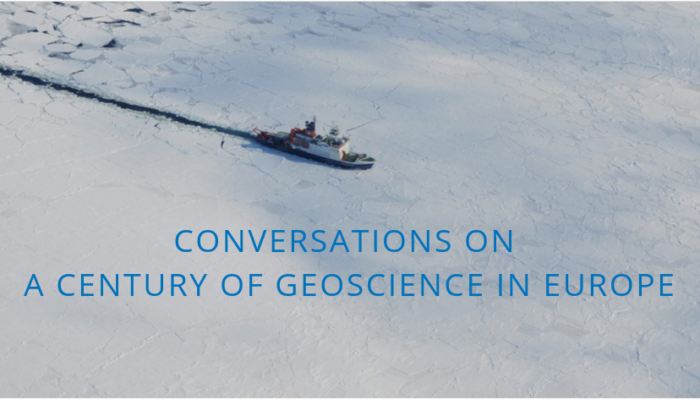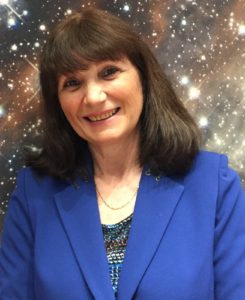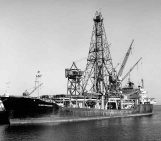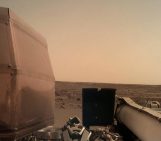
Over the last century, geoscientists have made incredible contributions to our understanding of the Earth, the solar system, and beyond. Inspired by the American Geophysical Union (AGU) and the International Union of Geodesy and Geophysics (IUGG) centennials, which are celebrated in 2019, we would like to highlight Europe’s role in shaping the geosciences and the great achievements of European geoscientists within the last century.
In this series of interviews, scientists reflect on the last 100 years of Earth, space and planetary sciences in Europe and share their perspectives on the future.
 Mioara Mandea: Programme Manager for the Solid Earth Observation / Directorate of Innovation, Applications and Science at the Centre National d’Etudes Spatiales (French Space Agency)
Mioara Mandea: Programme Manager for the Solid Earth Observation / Directorate of Innovation, Applications and Science at the Centre National d’Etudes Spatiales (French Space Agency)
In your opinion, what are some of the biggest ways Europe and European scientists have shaped the geosciences within the last century?
I would say that over the last century, some of the most ‘shocking’ revelations have come from the Earth’s deep interior. Regarding this branch of the geosciences, I would like to focus on two facts and the geoscientists that established them.
Firstly, I would like to mention a Danish geophysicist, Inge Lehmann, who discovered in 1936 that the Earth has a solid inner core inside a molten outer core. She used mathematics to analyze the way energy released by earthquakes travels through the Earth. Lehmann developed a mathematical model of our planet featuring a solid inner core, and this model agreed with the observed seismological data. Within a few years after this model was proposed, as ever more accurate seismic measurements were acquired, Lehmann’s theory was confirmed and her model with a solid core became accepted in full.
Secondly, I would like to name Alfred Wegener, the youngest son of a Berlin family, who proposed a century ago his theory of ‘continental drift’. In 1912 Wegener proposed that the continents are slowly drifting around the Earth, which would explain why the outlines of many coastlines (like South America and Africa) seem to fit together like a puzzle. His hypothesis was controversial and not widely accepted until the 1950s, when numerous discoveries, such those based on palaeomagnetic data, provided strong support for continental drift. Wegener’s theory laid the foundation for the development of modern plate tectonics theory. As years passed, more and more evidence was uncovered to support the idea that the plates move constantly over geological time. Since its emergence in the 1960s, plate tectonic theory has gained wide-spread acceptance as the model of Earth’s processes.
Which European researcher from the last century has influenced your work the most?
My education, my employment background and my personal interests have offered me the chance to meet so many interesting scientists. My professional experiences in Romania, France and Germany made it possible to work with many well-known researchers and enthusiastic students. So, a large number of European scientists has influenced my work over the last decades, and I would like to thank each and every one for support and guidance. Particularly, I would like to name my two mentors in geomagnetism: Liviu Constantinescu with whom I shared the interest for natural sciences and the history of civilisations, and Jean-Louis Le Mouel with whom I shared the interest for high-accuracy geomagnetic field measurements and the unique working environment of magnetic observatories.
For the next generation of researchers, what skills/technology/concepts do you think will be the most important for advancing the next century of geoscience?
The most important requirement for advancing science is to enjoy science! But in addition, something else is desirable, something I would like to call a ‘3C must’: Creativity, Collaboration, Communication.
The geosciences are of course constantly evolving, but at the moment I have the impression that they are moving into a new phase spurred by technology. Technological breakthroughs will include globally, continuously, high-accuracy measurements from different platforms. Satellite-based observations will be continuously needed to bring new insights into Earth’s processes.
In addition to better and more frequent measurements, applying artificial intelligence methods to challenges in geosciences has the potential to have a major impact in the next decades. However, integrating it is not straightforward. The study of Earth’s system, with the amount of geospatial data available via remote sensors above the Earth and/or below the seas, remains highly complex and simulating or predicting changes that occur across different spatial and temporal scales remain challenging. The geoscientist of the future needs to be an engineer and a physicist, a manager and an astronomer, a consultant and an analyst. So you can see that this job will be as complex and multi-faceted as the Earth’s system is!
What do you think will be the biggest challenges for the geosciences in the next century?
Over the next century? There will be many challenges and they will evolve in time. On one side, it is crucial to deepen our knowledge of the functioning of the Earth’s system and its critical thresholds and, on the other, to developing response strategies to global changes. So, over the next decades, we will need to understand the Earth as a unique system; we need to identify high-priority novel research opportunities and combine research on surface and deep Earth processes with other fields such as ocean and atmospheric sciences, as well as biology, engineering, computer and social sciences.
Moreover, the understanding and knowledge gained from work on the geosciences will have to be more and more involved in how we manage natural resources and hazards. This being said, I would like to identify here three potential major challenges: i) analysis of huge, multi-disciplinary and global data, provided by ground networks and Earth observation satellites; ii) understanding of complex global processes; iii) forecasting natural hazards, from earthquakes to tsunamis, from cyclones to floods, from volcanic eruptions to landslides.
Last but not least, I think that predicting ‘space weather’ is another important defy because of the intricate interactions between many systems – the Sun, solar wind, Earth’s atmosphere and Earth’s magnetic field… (a final word which makes a wink at my centre of interest!).
Interview by Olivia Trani, EGU Communications Officer
You can find more of our interviews on a century of geoscience in Europe here:




